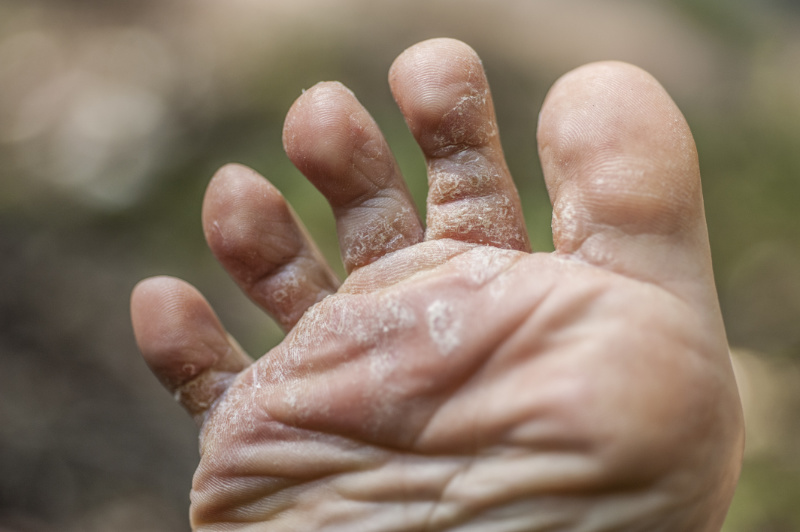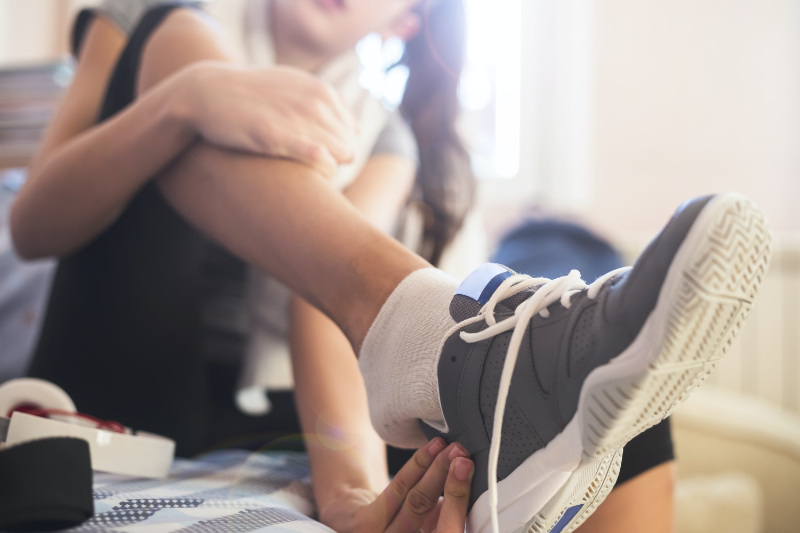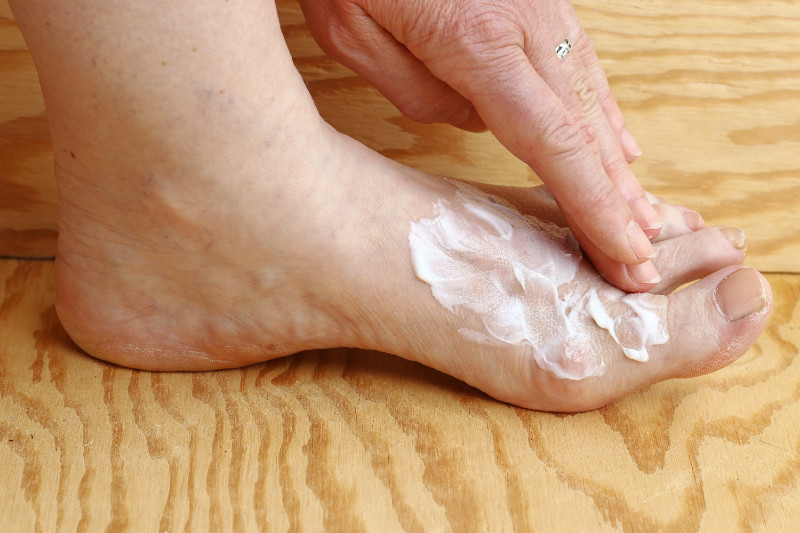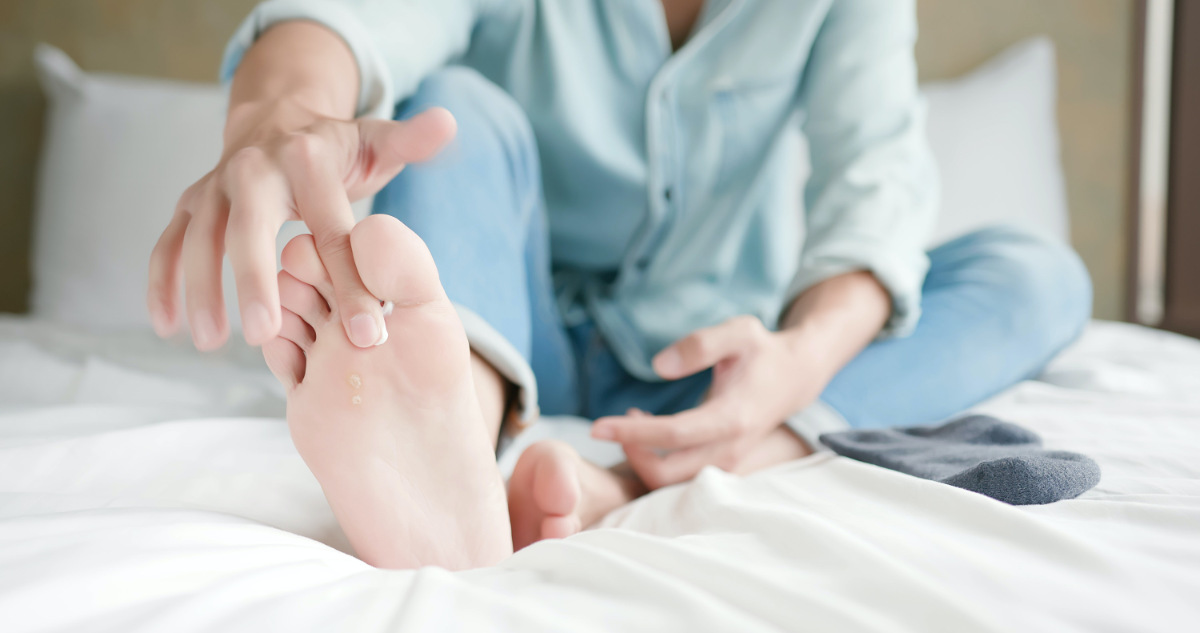Athlete’s foot is a very common infection that can affect anyone. What starts as an irritating itch between your toes can develop into a painful foot condition that if left untreated can cause permanent damage to your feet. The good news, however, is that it athlete’s foot is easy to treat and prevent.
What is athlete’s foot?

Athlete’s foot – or tinea pedis – is a very contagious fungal infection that is picked up by coming into contact with infected tissue such as skin. The fungus that causes athlete’s foot lives harmlessly on dry, clean skin but in damp and warm conditions it can multiple rapidly and penetrate the outer layer of the skin through small cracks to spread the infection.
Athlete’s foot symptoms
“Athlete’s foot isn’t easy to spot, as the symptoms are not always consistent and can look quite different,” explains Emma McConnachie, podiatrist and vice-president of the College of Podiatry. It can affect anywhere on one or both feet but symptoms are usually seen in the arch of the foot or around the toes.
Common athlete’s foot symptoms include:
- Itching or a burning sensation between your toes or on the soles of your feet
- A red rash or white, wet-looking skin between your toes
- Dry, flaky or cracked skin on your feet or between your toes
If left untreated, althlete’s foot can result in:
- Large painful cracks on the soles of your feet
- Painful blisters or ulcers on your foot
- Damaged toenails
- Smelly feet
“After several months, athlete’s foot can spread into the toenails and cause permanent damage, so it’s always best to seek treatment as quickly as possible,” says McConnachie
How do you get athlete’s foot?

Athlete’s foot is very contagious and spreads either through direct contact with another person’s infected skin or by touching infected surfaces such as towels, clothing, shoes and floors.
Athlete’s foot thrives in damp warm environments such as gym changing rooms, communal showers and around swimming pools. Walking barefoot in these areas increases your chance of picking up the infection from someone else.
Are some people more likely to get athlete’s foot?
Not everyone who comes into contact with the infection will get it, but those with moist, sweaty feet, or very dry feet with breaks in the skin, are most likely to develop it. In fact, it’s called athlete’s foot as people wearing sweaty trainers all day are also at a higher risk of getting infected.
Athlete’s foot is also a particular concern for those suffering from diabetes. High blood glucose levels can increase the likelihood of becoming infected, as well as make the infection more difficult to treat. Diabetes sufferers are advised to check their feet daily for signs of fungal infection and visit a podiatrist regularly.
Treating athlete’s foot

There are many effective over-the-counter treatments for athlete’s foot, including creams and sprays, which can range from requiring just a single application, to applying them every day for a couple of weeks. Make sure to use these all over both feet, as the fungus can be in areas that don’t look affected.
For nail infections, consult with a podiatrist, who will be able to determine if it is a fungal infection or just a discoloured nail, and can recommend treatments appropriate for your medical history.
How to prevent athlete’s foot
To help prevent fungal infections, you can follow these top tips:
- Keep your feet clean and dry, especially between your toes. Always dry between your toes after bathing and avoid applying creams in between your toes. It’s easy for it to get too moist in there and for the skin to crack, which increases your risk of infection.
- Moisturise your feet regularly, especially the heels, as they can easily split from being too dry.
- Alternate the shoes you wear, allowing each pair time to dry out properly after wearing – or at least ventilate or dry your shoes.
- Never walk barefoot in communal areas – always wear flip-flops or pool shoes. Neoprene style swim shoes are also now available in a variety of colours and styles, with the added bonus of a thin, non-slip sole – ideal for at the pool.
- Make sure your toes aren’t squeezed together in tight shoes. Instead choose well-fitted shoes that have room for your toes to move – preferably made from natural materials.
- Don’t try on shoes barefoot in shops. “I recommend always taking a pair of socks or thin knee-high hosiery with you when you try on potential shoe purchases,” says McConnachie.
Persistent athlete’s foot symptoms
“As it is a fungal infection, it’s important to treat athlete’s foot early to prevent longer-term damage, or spreading to other areas of your skin,” says McConnachie. “If simple treatments don’t work within three weeks, or you spot anything you are unsure about, then you should visit a specialised healthcare professional, such as a podiatrist. You can find a local podiatrist via the College of Podiatry website (cop.org.uk).”































































